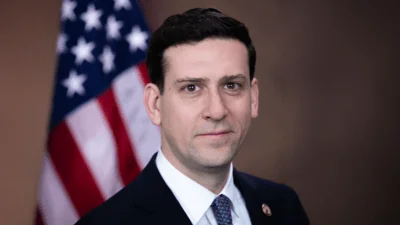NEW YORK - The Transportation Security Administration, Delta Air Lines and JFKIAT, LLC jointly launched new automated security screening lanes in Terminal 4 at John F. Kennedy International Airport (JFK) today, introducing state-of-the-art checkpoint technology to one of the busiest airports in the country before the busy summer travel season. The automated screening lanes incorporate technology that enhances security effectiveness while decreasing the time travelers spend in security screening.
TSA and Delta Air Lines deployed the first six of 17 automated screening lanes to JFK Airport in Terminals 2 and 4. Two lanes are currently in use in Terminal 2 and another four lanes are in use in Terminal 4. When all of the lanes are installed in those terminals, JFK will have three lanes in Terminal 2 and 14 lanes in Terminal. The additional lanes will be installed and in use in the weeks ahead.
JFK is the fifth airport in the country that has the new automated screening lanes in use. The other four airports are nearby Newark Liberty International Airport with 17 lanes, Hartsfield-Jackson Atlanta International Airport with 22 lanes, Chicago O’Hare International Airport with five lanes and Los Angeles International Airport with eight lanes.
“TSA continues to deploy state-of-the-art technologies to ensure that we continue to focus on protecting passengers who travel out of JFK International Airport," said John Bambury, TSA’s Federal Security Director at the airport. “We look at this new equipment as being able to provide enhanced security while improving the customer experience for travelers."
“Delta was the first airline to invest in the implementation of these game-changing security lanes last year, so we’re excited to bring this innovative solution to New York, one of our key hubs, to help improve the airport experience for our customers in JFK," said Hussein Berry, Delta’s vice president for airport operations at JFK. “This is one of many ways Delta is looking for new ways to better serve our customers from curb to gate."
“On behalf of Terminal 4’s 20.6 million annual passengers, we are thrilled to welcome advanced screening lanes to one of the most active airport terminals in the country," said Gert-Jan de Graaff, President and CEO of JFKIAT, the company that manages Terminal 4 at JFK. “These state-of-the-art, automated checkpoints will allow us to enhance the customer experience by increasing efficiency, decreasing wait times and providing for speedier travel overall through the terminal during the summer season."
The new automated screening lanes offer several features designed to improve the screening of travelers by automating many of the functions previously conducted manually, which allows travelers to move more swiftly and efficiently through the checkpoint. These innovations include:
* Stainless steel countertops that were constructed to enable several passengers to place their items in bins simultaneously;
* Automated conveyor belts that draw bins into the X-ray machines, and returns the bins back to the front of the queue for passengers;
* Carry-on bags that trigger an alarm warning of a potential threat that are automatically pushed to a separate area to allow bins behind it to continue through the screening process uninterrupted;
* Property bins that are 25 percent larger than the bins in standard screening lanes that are large enough to hold roller bags;
* Unique Radio Frequency Identification (RFID) tags that are attached to each bin to allow for additional accountability of a traveler’s items as they transit throughout the security process;
* Cameras that capture photographic images of the contents of each bin, which are linked side-by-side to the X-ray image of a bag’s contents.
TSA continues to collaborate with vendors, airlines, airports, and across the counter-terrorism community to roll out additional automated checkpoint lanes to improve the screening process as well as help minimize wait times. TSA’s long-term goal is to incorporate enhanced capabilities at checkpoint lanes throughout the country.
“Our responsibility remains keeping passengers safe while also moving through security as efficiently as possible," Bambury said.
Source: U.S. Department of Homeland Security, Transportation Security Administration









